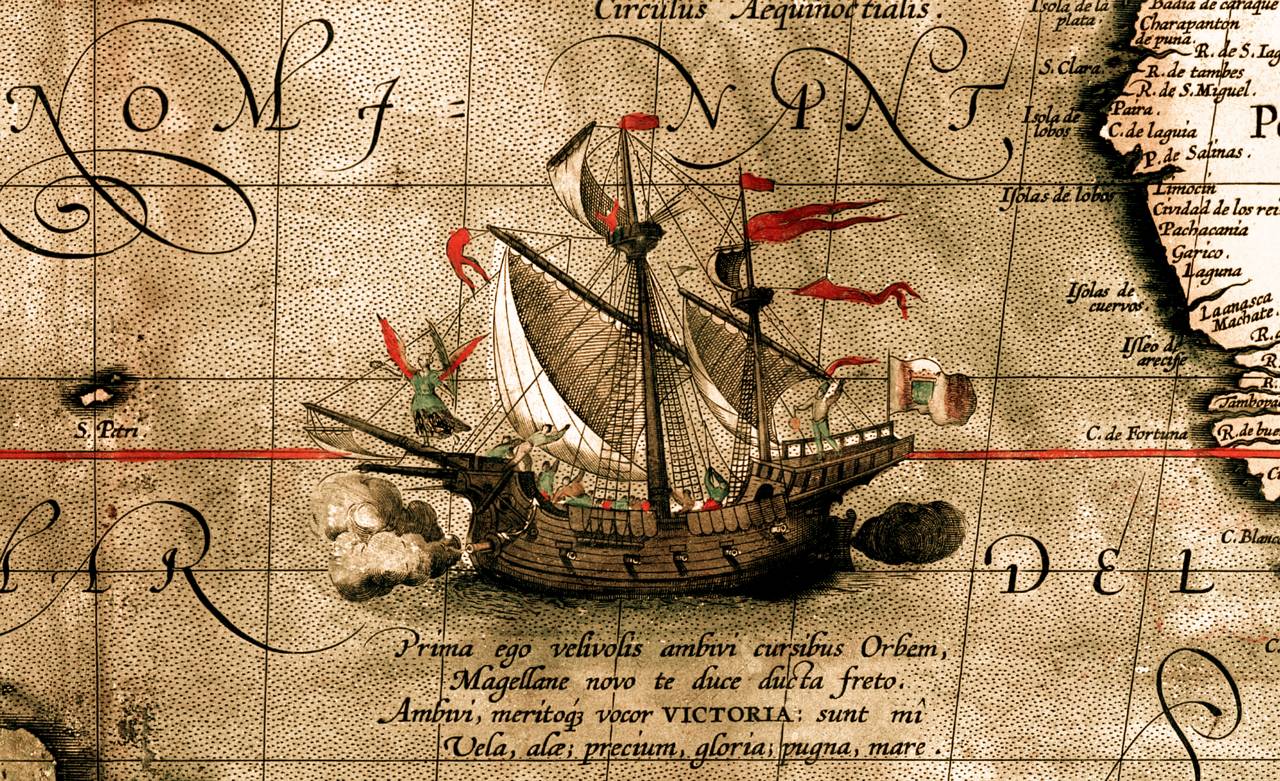Along the coasts of Africa, India, and China, the Portuguese established a series of trading posts over which they hoisted their flag as a sign that these bits of territory had been annexed to the Portuguese Crown. Such posts were often called factories after the factors, or commercial agents, who were stationed there to trade with the local population.
The Portuguese offered guns, knives, cheap cloth, and fascinating items of all sorts that provided access to a new technology. In return they got gold and silver, pepper and other spices, silks and other luxuries, and finally, raw materials such as cotton and, in Brazil, tobacco and sugar.
Two guiding principles of this trade were accepted by almost all contemporaries. First, in this trade the mother country was the dominant partner and would provide manufactured goods and services, while the colony produced raw materials. Second, nationals of other European lands were excluded from this trade; they could not deal directly with the colony or share in the commerce between mother country and colony. The Portuguese, in sum, followed a policy of mercantilism.
Armed forces were essential to this colonial system. Relatively small land forces proved sufficient both to keep “the natives” under control and to ward off rival Europeans from the trading posts. A large and efficient navy was also necessary to protect the sea routes of a colonial power. Pirates were often an unofficial adjunct of a navy, called privateers and operating only against enemies or neutrals.
Few Portuguese settled either in the hot coastlands of Africa or in the already heavily populated lands of India and the Far East; nor did they attempt to transform these populations into pseudo-Portuguese. Many local residents were enlisted in the armed forces or used as domestic help or in subordinate posts such as clerks, and they inevitably learned something of the language and culture of the colonial power without abandoning their own.
But neither among the tribes of Africa nor among the Indian and Chinese masses did the process of Europeanization go very deep. The Portuguese left the old ruling chiefs and classes in local authority much as they had found them. The local upper classes monopolized most of the limited European wares; very little that was Western touched the masses or tempted them away from their traditional ways.
There was one exception. The Portuguese did attempt to Christianize the indigenous groups they encountered. Some of these attempts involved force, as at Goa, where the Portuguese pulled down all the temples and made it impossible to practice the traditional religion. From the first, the earliest missionaries underestimated the obstacles they were to encounter. Many missionaries were in a sense partly converted themselves; that is, they came to be very fond of their charges and were convinced that they were almost Christians already.
From the start, difficulties arose between the missionaries, anxious to protect those they regarded as their charges, and the traders and colonial officials, driven by material incentives to exploit the local population. To local chiefs and monarchs, converts were potential traitors, likely to be more loyal to their Western faith than to their own rulers. Money and manpower were always serious problems for the missionaries, with so many to convert and tend, and with so few people and so little money to do the work.
Measured in statistical terms, the effort to convert India and the Far East to Christianity did not make a serious impression on the masses; there were fewer than a million converts by 1600. The greatest missionary successes tended to occur in areas of Buddhism, then in a state of decay, and the greatest failures in areas of Islam, for Muslims seldom abandoned their faith for any other.
The Portuguese soon had to yield to newer rivals. Their banking, their business methods, their initiative were not equal to competition with the aggressive, expanding powers of northwest Europe. Though monopolizing the import of pepper from the East, they sought the assistance of the more knowledgeable merchant community of Antwerp in distributing the pepper to European markets.
The cloth and other wares that they traded in the East were often imported from competing European countries with more developed industries. After the sixteenth century the Portuguese ceased to add to their empire and to their wealth, and they sank back to a secondary place in international politics. A great epic poem, the Lusiads (1572) of Liuz de Canoes (c. 1524-1580), was their monument, written at the height of their empire.
The sixty years of union between the Spanish and Portuguese monarchies, 1580-1640, accelerated the decline of Portugal’s imperial fortunes by involving it in prolonged worldwide warfare with Spain’s great adversary, the Dutch republic. Better-equipped and better- disciplined Dutch forces drove the Portuguese from most of their posts in present-day Indonesia and from Ceylon and parts of the Indian coast. Yet a Portuguese empire did survive along the old route around Africa to Goa, on the island of Timor off southeast Asia, and at Macao.

